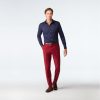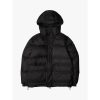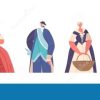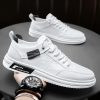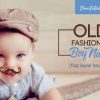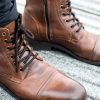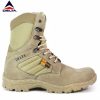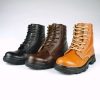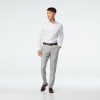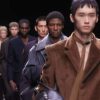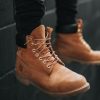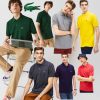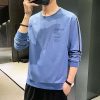Types of Mens Fashion A Comprehensive Guide
Casual Men’s Fashion
Types of mens fashion – Casual menswear offers a blend of comfort and style, perfect for everyday wear. It prioritizes practicality and personal expression, allowing for a wide range of interpretations. Key characteristics include comfortable fabrics, relaxed fits, and versatile pieces that can be easily mixed and matched.
Popular Casual Menswear Styles
The following table showcases popular casual menswear styles, categorized for easy reference. Note that trends evolve, and these are examples of common styles.
| T-shirt Styles | Jeans Cuts | Sneaker Types | Accessories |
|---|---|---|---|
| Crew neck, V-neck, Henley, graphic tees | Straight leg, slim fit, skinny, relaxed fit | Canvas sneakers, running shoes, low-top sneakers, high-top sneakers | Baseball caps, watches, backpacks, sunglasses |
Casual Outfit Examples
Three versatile casual outfits demonstrate the adaptability of casual menswear.
- Weekend Brunch: A linen button-down shirt in a light color, chinos in a neutral tone, and loafers. The linen provides breathability, while the chinos offer a smart-casual look. Loafers add a touch of sophistication.
- Casual Date: A well-fitting dark-wash denim jacket, a plain white t-shirt, dark-wash jeans, and Chelsea boots. This outfit balances casual comfort with a stylish edge.
- Running Errands: A comfortable cotton t-shirt, joggers, and athletic sneakers. This outfit prioritizes comfort and practicality for everyday activities.
Formal Men’s Fashion
Formal menswear demands attention to detail and adherence to established conventions. It signifies respect and sophistication, often associated with important events and professional settings. Proper fit and high-quality materials are paramount.
Essential Elements of a Formal Men’s Suit
A formal suit typically consists of a tailored jacket and trousers made from high-quality fabrics like wool or wool blends. The fit should be precise, neither too tight nor too loose. Essential accessories include a crisp dress shirt, a tie (often silk), dress shoes (oxfords or derbies), and possibly a pocket square.
Types of Formal Wear
Different levels of formality dictate the choice of attire. A tuxedo is the most formal, typically worn for black-tie events. A business suit is suitable for business meetings and formal occasions. A morning suit is a highly formal option for daytime events like weddings.
Selecting a Well-Fitting Suit
Choosing a well-fitting suit involves precise measurements and often requires professional tailoring. Key measurements include chest, waist, sleeve length, and inseam. A good tailor can adjust the suit to ensure a perfect fit, enhancing both comfort and appearance.
Semi-Formal Men’s Fashion: Types Of Mens Fashion
Semi-formal attire bridges the gap between casual and formal wear, offering versatility for a range of occasions. It balances comfort and style, allowing for greater personal expression while maintaining a level of sophistication.
Versatile Semi-Formal Outfits
Semi-formal outfits are adaptable and can be tailored to specific events. The key is to find a balance between formality and personal style.
- Wedding: A tailored blazer, dress pants, a dress shirt, and dress shoes. A tie is optional depending on the event’s formality.
- Corporate Event: Dress pants, a button-down shirt, and a blazer or sport coat. The choice of footwear can range from dress shoes to loafers.
- Dinner Date: Dark-wash jeans, a button-down shirt, a blazer, and boots or dress shoes. This option allows for a more relaxed yet stylish look.
Appropriate Footwear and Accessories
Footwear and accessories play a crucial role in completing a semi-formal look. Dress shoes, loafers, or even well-maintained boots can be appropriate depending on the outfit and occasion. Accessories such as belts, watches, and ties can add personality and sophistication.
Men’s Fashion Accessories
Accessories are the finishing touches that elevate an outfit, adding personality and reflecting individual style. They can transform a simple ensemble into a statement piece. Careful selection and coordination are key to achieving a polished look.
Men’s fashion encompasses a broad spectrum of styles, evolving significantly across eras. To understand the depth of menswear, it’s helpful to explore specific periods, such as the intricacies of mens fashion 1890s , which significantly influenced subsequent trends. This historical context provides valuable insight into the evolution of modern men’s clothing and the recurring themes that continue to shape contemporary styles.
Types of Men’s Fashion Accessories
A wide range of accessories enhances men’s fashion. Watches add a touch of class and functionality. Belts provide both practicality and style. Ties add formality and personality. Scarves offer warmth and visual interest.
Hats complete an outfit and reflect personal style.
Accessorizing Outfits
Accessories should complement the outfit, not overpower it. A simple watch can enhance a casual outfit, while a patterned tie can add personality to a suit. The key is to create a cohesive and stylish look.
Visual Guide to Accessory Styling

Source: okezone.com
Imagine a man in a navy suit. A simple, dark-colored leather belt and classic dress shoes complete the look. A subtle patterned tie adds personality without being overpowering. A simple wristwatch provides a touch of sophistication.
Now imagine a casual outfit: dark-wash jeans, a white t-shirt, and a denim jacket. A canvas sneaker provides comfort, while a baseball cap adds a relaxed, sporty touch. A simple leather bracelet adds a personal touch.
Men’s Fashion Styles Across Cultures
Men’s fashion varies significantly across cultures, reflecting unique traditions, climates, and social norms. Understanding these differences provides insights into the diverse expressions of style worldwide.
Cultural Comparisons in Men’s Fashion
Consider the sharp tailoring of Italian men’s fashion, emphasizing sophisticated fabrics and clean lines. Contrast this with the loose, comfortable clothing often seen in some Southeast Asian cultures, prioritizing practicality and breathability. Japanese menswear often features a blend of traditional and modern elements, resulting in a unique aesthetic.
Influence of Cultural Factors

Source: alicdn.com
Cultural factors, including climate, religion, and social norms, heavily influence clothing choices. Traditional garments often hold deep cultural significance, while modern interpretations adapt these styles for contemporary contexts.
Outfits Inspired by Different Cultures
Imagine a tailored three-piece suit in a rich Italian fabric, representing the sophisticated elegance of Italian menswear. Picture a flowing, lightweight tunic and loose trousers, typical of some Southeast Asian styles, reflecting comfort and practicality. Visualize a modern kimono-inspired jacket paired with tailored trousers, demonstrating the fusion of traditional and contemporary Japanese aesthetics.
Evolution of Men’s Fashion
Men’s fashion has undergone dramatic transformations over the past century, reflecting broader social and technological shifts. Key periods showcase distinct styles and trends, revealing the dynamic nature of menswear.
Key Fashion Eras
| Era | Prominent Styles and Trends |
|---|---|
| 1920s | Loose-fitting suits, dropped waistlines, wide-legged trousers |
| 1950s | Slim-fitting suits, conservative styles, fedoras |
| 1970s | Disco fashion, flared trousers, bold colors and patterns |
| Present | Diverse styles, blending classic and contemporary elements, streetwear influences |
Social and Technological Influences, Types of mens fashion
Social changes, such as evolving gender roles and technological advancements in fabric production and manufacturing, have significantly impacted menswear throughout history. These factors have driven innovation and diversification in styles and trends.
FAQ Compilation
What is the difference between a business suit and a tuxedo?
A business suit is appropriate for professional settings and many semi-formal events. A tuxedo, however, is strictly formal evening wear reserved for black-tie events.
How can I choose the right size suit?
Professional tailoring is recommended. A well-fitting suit should allow for comfortable movement without being baggy. Shoulder seams should sit naturally, and the jacket should button comfortably without pulling.
What are some essential casual wardrobe staples?
A versatile selection of t-shirts, well-fitting jeans or chinos, comfortable sneakers, and a few key outerwear pieces (like a blazer or a denim jacket) form a solid casual foundation.
How important are accessories in men’s fashion?
Accessories significantly elevate an outfit. A well-chosen watch, belt, or scarf can add personality and sophistication, completing the overall look.



